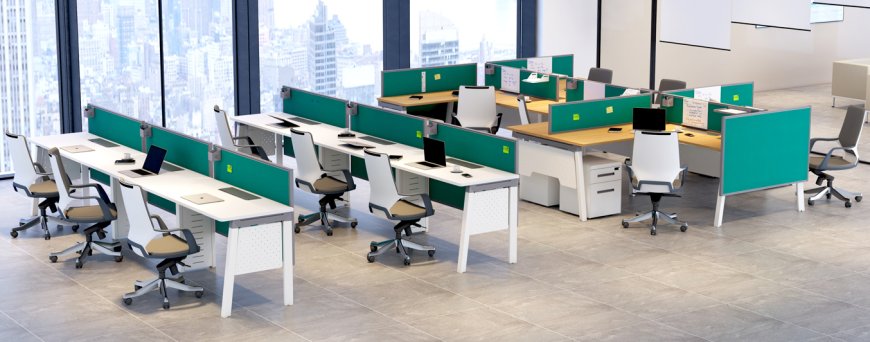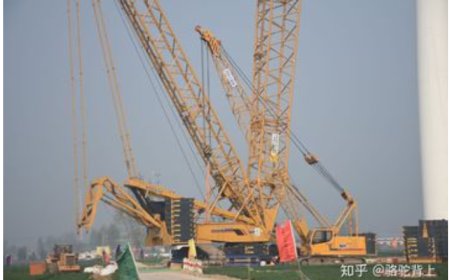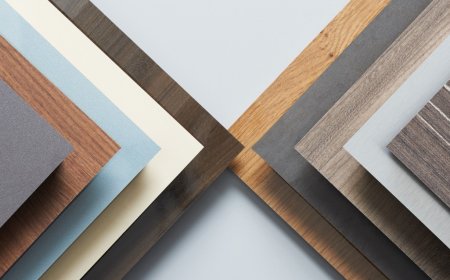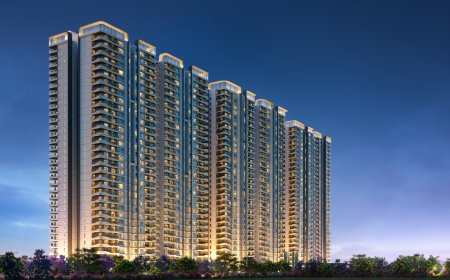How Office Cubicles Boost Employee Productivity and Satisfaction
This article explores how well-designed office cubicles enhance work performance and morale, and why many organizations are embracing them as a core part of their workspace strategy.

In the ever-evolving world of workplace design, the focus on open spaces, collaboration hubs, and remote work setups has not completely erased the value of a well-structured, thoughtfully planned office cubicles layout. While some may view cubicles as relics of the past, the modern version plays a critical role in boosting productivity, maintaining organization, and improving employee satisfaction.
The Shift in Perception of Office Cubicles
Office cubicles have undergone a major transformation from their traditional form. Initially introduced to increase efficiency and reduce distractions, they became synonymous with rigidity and uniformity. However, in recent years, companies have rediscovered the power of cubicles especially when combined with ergonomic furniture, smart technology, and adaptable layouts.
Todays cubicles are more than physical partitions they serve as personal sanctuaries within bustling office environments.
The Link Between Environment and Productivity
Productivity is heavily influenced by environment. A workspace that allows employees to concentrate without interruptions is essential for completing complex tasks. Office cubicles help achieve this by providing:
-
Defined personal space
-
Acoustic insulation from ambient noise
-
Limited visual distractions
-
Better storage and organization
All of these factors help workers maintain focus, manage their time more effectively, and reduce the fatigue caused by open office chaos.
Advantages of Using Office Cubicles
1. Enhanced Focus and Concentration
One of the most notable advantages of office cubicles is their ability to minimize distractions. Employees are less likely to be interrupted by casual conversations, foot traffic, or visual noise, enabling them to stay locked in on tasks that require mental effort.
2. Personal Ownership of Space
Employees with their own cubicles are more likely to feel a sense of ownership over their workspaces. This allows for personalization, which contributes to comfort and satisfaction. A personalized space can positively impact mood, motivation, and even creativity.
3. Efficient Space Utilization
Cubicles make it easier to maximize the use of square footage without making the office feel crowded. Modular designs allow businesses to scale up or down as needed while maintaining a cohesive layout.
4. Improved Organization and Workflow
Well-designed office cubicles include built-in storage options like shelves, filing cabinets, and pinboards. This helps employees keep essential items within reach, reducing time lost searching for tools or documents.
5. Professional Aesthetic
A neatly arranged cubicle environment provides a uniform, professional appearance. It communicates order and discipline, especially in industries where client or stakeholder visits are common.
Customizing Office Cubicles for Different Roles
The needs of employees vary depending on their roles. Modern office cubicles can be tailored to accommodate a range of job functions:
-
Sales teams may benefit from open-top cubicles that allow for collaboration and quick communication.
-
Finance departments often require higher walls and soundproofing to focus on detail-oriented tasks.
-
Creative teams might need larger spaces with flexible surfaces for brainstorming and visual displays.
-
IT personnel may require larger desks, extra monitor capacity, and enhanced power connectivity.
Customization ensures every employee feels equipped to perform their role efficiently.
Psychological Impact of Office Cubicles
Beyond physical functionality, office cubicles can impact an employees mental well-being. The privacy and control they provide can lead to:
-
Reduced stress
-
Increased job satisfaction
-
Improved concentration
-
Greater sense of autonomy
By shielding employees from constant interaction and overexposure, cubicles promote mental clarity and allow for emotional regulation during busy workdays.
Balancing Privacy and Collaboration
A common critique of cubicles is that they discourage team interaction. However, with thoughtful design, its possible to strike a balance. Consider the following solutions:
-
Low partitions to promote eye contact and light flow
-
Cluster configurations for group work
-
Shared breakout spaces for meetings and informal communication
-
Transparent panel inserts to maintain openness while defining space
These design tweaks help retain the productivity benefits of cubicles while still supporting collaboration when needed.
Acoustic Benefits of Cubicle Design
Noise pollution in the workplace can be a significant distraction. Office cubicles are often constructed with sound-dampening materials that absorb noise and reduce the spread of sound waves across open areas. Acoustic benefits include:
-
Fewer disruptions from nearby conversations
-
Reduced auditory stress
-
Improved call quality for phone or video meetings
With the growing reliance on video conferencing, this feature is more critical than ever.
Design Trends in Office Cubicles
Todays cubicles are sleek, modern, and designed to support employee well-being. Here are a few current design trends:
-
Sit-stand desks integrated into cubicle layouts
-
Eco-conscious materials such as recycled fabrics and sustainable laminates
-
LED lighting solutions built into cubicle frames
-
Neutral and calming color palettes that support focus
-
Tech-friendly designs with USB ports, cable trays, and monitor mounts
These features bring cubicles into alignment with the latest expectations for ergonomic and efficient workplace design.
Cubicles in the Post-Pandemic Office
The return to the office after remote work has renewed interest in office cubicles for their safety benefits. By creating defined, individual workspaces, cubicles help maintain physical distancing and limit unnecessary exposure to shared surfaces.
Hygienic enhancements for post-pandemic offices may include:
-
Antimicrobial surfaces
-
Easy-to-clean materials
-
Air filtration integration
-
Higher panel heights for health safety
These considerations show how cubicles continue to evolve to meet modern workplace health requirements.
Cost-Effective Office Planning
Compared to constructing individual offices or converting open spaces with temporary dividers, office cubicles are a cost-effective option. Businesses save on construction and gain the flexibility to reconfigure layouts as needed.
Modular cubicle systems reduce the need for costly remodels and allow offices to adapt to changing team sizes or functions without major disruptions.
Maintenance and Upkeep of Office Cubicles
Keeping office cubicles clean and functional requires minimal but consistent maintenance:
-
Regular cleaning of panels and surfaces
-
Checking for loose hardware or damaged partitions
-
Sanitizing shared components like phones and drawers
-
Updating power and data connections as needed
Maintaining a clean and organized workspace encourages respect for the environment and contributes to employee satisfaction.
Frequently Asked Questions
Are cubicles suitable for all industries?
Yes. Cubicles are versatile and can be customized for various work environments, from law firms and call centers to creative agencies and healthcare offices.
Can cubicles be made environmentally friendly?
Absolutely. Many manufacturers offer cubicles made from recycled or eco-certified materials and low-VOC finishes.
Do cubicles hinder teamwork?
Not when designed strategically. Using a mix of private and shared spaces encourages focused work without sacrificing collaboration.
Are modern cubicles comfortable?
Yes. With features like adjustable chairs, task lighting, and ergonomic setups, todays cubicles are built for comfort and health.
Whats the average lifespan of a cubicle system?
With proper maintenance, cubicle systems can last 1015 years or more, making them a durable investment for any office.
Conclusion
Far from being outdated, office cubicles are making a strong comeback as an essential component of efficient and employee-friendly workplace design. With benefits like improved focus, better organization, and enhanced personal space, cubicles support a more productive and satisfying work experience.
By choosing modern, flexible, and well-planned cubicle systems, businesses can create an environment that encourages deep work, fosters employee well-being, and adapts to the evolving demands of todays professional landscape.



































